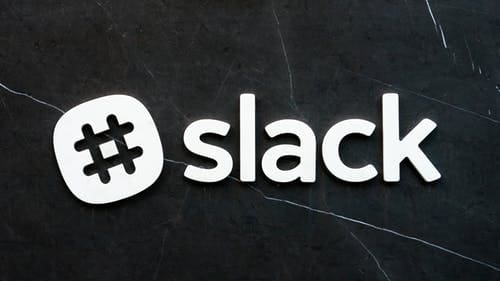The Battle Between ‘Slack’ and ‘Teams’

With Microsoft’s announcement that it’s Teams product has 20 million daily active users (and growing), sending Slack’s share price downwards (Slack has 12 million users), the battle is well underway in the $3.5 billion chat-based collaborative working software market.
What Is Slack?
Slack, launched in 2013, is a cloud-based set of proprietary team collaboration tools and services. It provides mobile apps for iOS and Android, and is available for the Apple Watch, enabling users to send direct messages, see mentions, and send replies.
Slack teams enable users (communities, groups, or teams) to join through a URL or invitation sent by a team admin or owner. Slack was intended to be an organisational communication tool, but it has gradually morphed into a community platform i.e. it is a business technology that has crossed over into personal use. Slack recently introduced an “email bridge” into its platform that will allow those who only have email to communicate with Slack users. Back in May last year, ‘Slack’ introduced a new ‘Actions’ feature that made it easier for users to create and finish tasks without leaving by having access to more 3rd party tools.
In October this Year Slack announced that it has 12 million daily active users, which is 2 million increase since January.
What Is Teams?
Teams, announced in November 2016 and launched by Microsoft in 2017, is a platform designed to help collaborative working and combines features such as workplace chat, meetings, notes, and attachments. Described by Microsoft as a “complete chat and online meetings solution”, it normally integrates with the company’s Office 365 subscription office productivity suite. In July 2018, Microsoft introduced a free, basic features version of Teams which did not require an Office 365 account, in order to increase user numbers and tempt users away from Slack.
Microsoft Teams is also the replacement for Skype for Business Online, the support for which will end on 31 July 2021, and all new Microsoft 365 customers have been getting Microsoft Teams by default from 1 September 2019.
Share Tumble For Slack
Slack’s share value fell earlier this year after it announced that its projected sales growth would be lower for the second half of the year. Slack became a publicly-traded company on the New York Stock Exchange in June, and investors have been saying that it will need to maintain an impressive growth rate to compete against competitors like Microsoft (with Teams), Alphabet (Google) and Facebook.
The recent announcement by Microsoft that Teams has 20 million daily active users compared to Slack’s 12 million and has increased daily active users by more than 50% from June caused another downward push on Slack’s share value.
Slack’s Challenge – To Get More Large Paying Customers
Slack, which enjoys popularity in the U.S corporate workplace has been trying to emphasise that it is not just a chat/messaging app, but that it can connect to companies’ other applications in a way that can streamline workflows and aid real value addition and savings. Slack is, however, facing a challenge in convincing big businesses that it is worthy, paid-for alternative to its more well-known competitors, and according to Bloomberg Intelligence analyst Andrew Eisenson, less than 1% of Slack’s customer base are large customers that spend more than $100,000 a year. One of the problems that Slack has is that although large companies in the US use it and like it, they currently have a free version, so Slack will have to convince them to upgrade to the paid-for version.
Despite having lower user numbers than Teams, some tech commentators have noted that Slack has stickiness and strong user engagement which help to attract businesses that want to get into using workstream collaboration software.
What Does This Mean For Your Business?
Microsoft has the advantage of a very well-known and trusted brand with huge reach, Teams already integrates with Office 365’s subscription office productivity suite, and there’s now a free version that doesn’t even require an Office 365 account. Also, Teams is set to replace Skype for Business Online next year, and Microsoft has made sure that Skype for Business Online customers know that Microsoft’s investment and interoperability will make the migration to Teams a fairly painless one.
All this means that Teams appears to be in a very good position to continue what has been a rapid growth this year, and despite Slack’s positive features, Slack will have to fight hard to get big businesses interested in order to compete.
For users, there are now several good collaborative working services to choose from, but at the present time, the facts that investors don’t know when Slack is going to be profitable, coupled with a fall in revenue have led some commentators to think that Teams is looking as though it could come out on top.
Sponsored
Ready to find out more?
Drop us a line today for a free quote!
